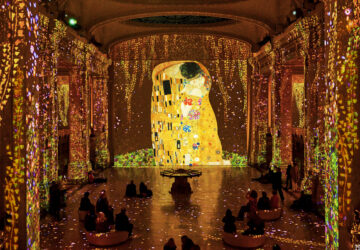Baltimore’s small independent craft breweries host some of the most unique architectural, flavorful and cultural facets of the city. Two particular locations demonstrate the individuality of the city’s craft brew scene, including the bar of many faces—The Brewer’s Art, and the one-stop-shop for home brewing, Nepenthe.
Nestled between the historical district of Mount Vernon with its monument to Washington and the young, hip area of Station North Arts and Entertainment District sits what appears to be a window into a classy barroom. The area is host to bookstores, crêperies, Middle Eastern restaurants, clubs and very little parking. Less manicured than Charles Village and Johns Hopkins University and much less touristy than the redeveloped Inner Harbor and its Hard Rock Café, Station North is representative of the indie art culture that Baltimoreans treasure but outsiders may never know about.
The front barroom of Brewer’s Art centers around a golden chandelier and patrons sip cocktails from glassware around high-tops or perched on black barstools. The bartender grabs bottles from the fireplace mantel behind him, and caters to a young professional crowd.
Take a left out of the bar, and you’ll be greeted by a fancy restaurant, complete with white tablecloths and candlelight. None of this would be all that interesting or unique if it weren’t for what awaits visitors downstairs. Bypass the hostess waiting for your reservation and the stairs lead to a catacomb of beer drinkers, a roaring ’20s speakeasy lookalike with a central bar and plenty of corners to tuck away with a goblet of home-brewed beer.
The décor mixes funky with classy—a glowing pink spiky lamp and a sticker-clad hanging lamp complement the flowery, ivy draped logo on the wall and the sleek countertops. It’s dark and smoky and the walls put off a reddish glow, amplified by tea light candles on each small table. To the right, a long bench hosts maybe ten people, and everyone can order unusually classy bar food like a pan of mac-n-cheese or rosemary garlic fries. House beers are $5.50 a piece, and offer Belgian and brown flavors alike, dry and easy-going and surprisingly full-bodied.
The masterminds behind the hidden treasure of a bar, named Esquire’s Best Bar in America in 2009, include an ex-librarian from University of Baltimore and two home-brewing buddies who occupied the re-modeled “city-house” of a wealthy banker. They compared their project to a “lemonade stand” in 2011 and the small-town vibe of friends offering libations for thirsty neighborhood people remains.
On the other side of the coin, Nepenthe Homebrew is bringing the craft process of making beer right to the garage, or the Mill; they provide space for home-brewers as well as supplies in their space in a converted Mill in Baltimore. Nepenthe, named for the elixir used to induce happiness (also found in flower form), is the only full-service location in Baltimore for at home beer and wine making, and they also brew on premises.
A self-described “adult candy store” where the ingredients for home-made “candy” are sold—sugar, yeast and all the fixin’s—Nepenthe makes the production of beer both simple and personal while reducing the cost.
Located along the Jones Falls Expressway, one of Baltimore’s more scenic roads and a favorite for bikers, Nepenthe occupies a spot inside the historic Meadow Mill Building. Topped with a steeple and reminiscent of industrial days, Meadow Mill sits in the Woodberry neighborhood of Baltimore once known as “Come by Chance.” Woodberry is a hidden residential area, away from the urban noise of the rest of Baltimore—but is easily accessible by the Light Rail, an inexpensive rail car you can pick up from Penn Station in Station North Arts District.
The rows of glass jars and bottles, boxes and bags really do resemble a candy store, and might remind visitors of the dollar general with plastic bags and metal scoops, where customers try to get as much candy as possible before weighing the bag on a little metal scale. A small glass countertop reveals rows upon rows of colored bottle-caps beneath while framed posters decorating the walls up to the high ceilings.
The shop will continue to expand, and offer classes as well as written instruction on home-brew practices. Before Nepenthe, home-brewing in Baltimore was just a club—Baltibrew, which still exists to honor and hone the science of home-brewing.
Opened by Hampden locals, Jill Antos and Brian Arnold, Nepenthe brings the kitschy, neon and feather boa kind of attitude of Hampden, home of the famous HonFest, in a subtle way to a quieter neighborhood. They offer stove-top kits, a multitude of ingredients, and options to make wine and mead as well. The shop sells yeast and hops in various different types and strands, and this kind of freedom is welcome to Baltimoreans hoping to branch out from even the smallest of craft breweries.
Though the shop is modest, its brew room resembling most other small operations you might find—cases upon cases of beer around metal pipes and large bins—the aspect of home-brewing on this scale and individual basis is new. This phenomenon is giving people a lot of scientific and artistic license with their beer, and it characterizes the way Baltimore likes to do things—differently.





